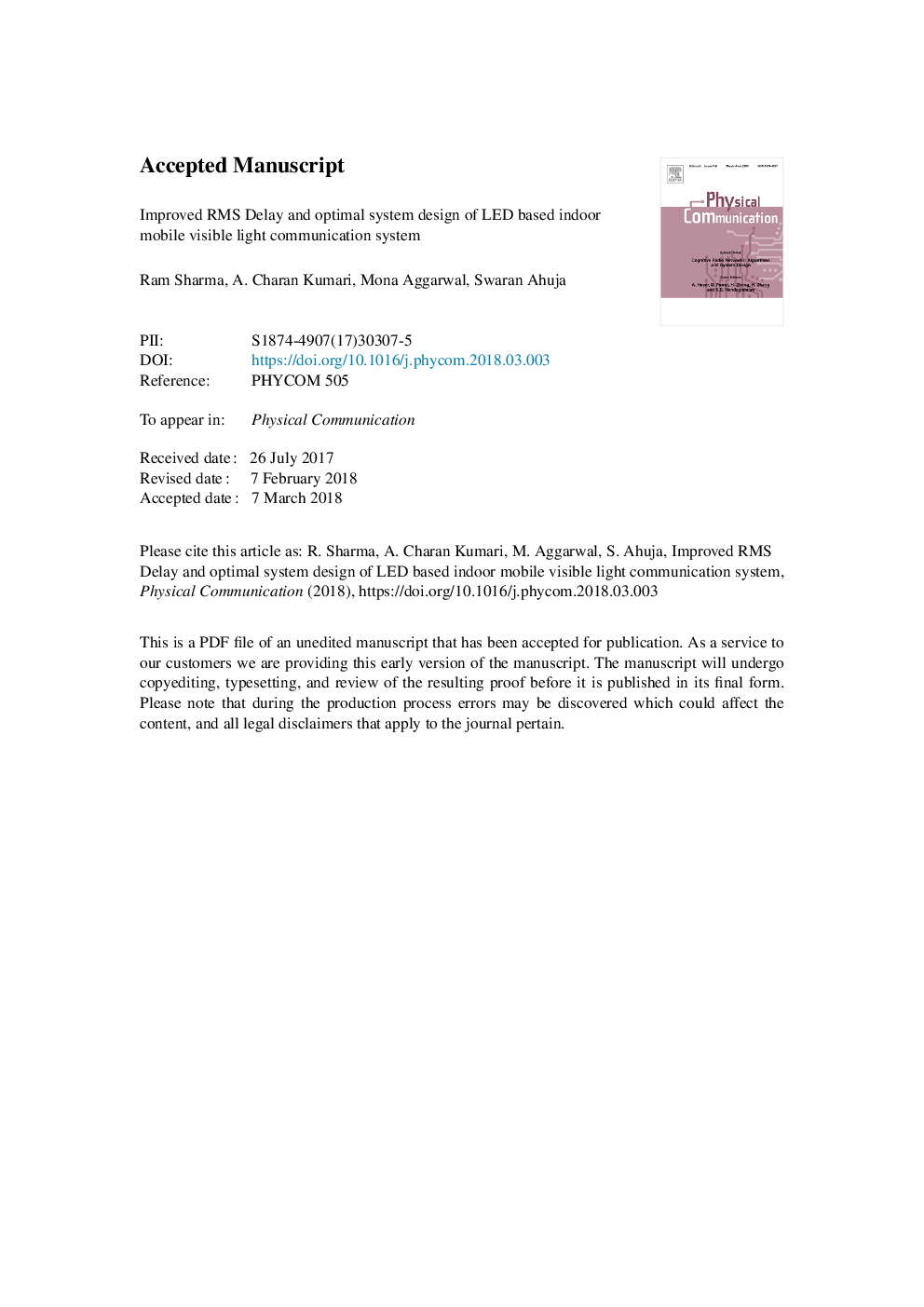| Article ID | Journal | Published Year | Pages | File Type |
|---|---|---|---|---|
| 6889043 | Physical Communication | 2018 | 28 Pages |
Abstract
The light emitting diode (LED) based lighting systems can be used for creation of the indoor communication network for sending information besides serving its main purpose of illumination. However, there are a number of impediments which are still under resolution in order to realize the full potential of such a system. In particular, the visible light communication (VLC) systems suffer due to high inter symbol interference (ISI) mainly on account of multi path propagation which impacts the spectral efficiency of the system. Besides ensuring ubiquitous coverage, it is also important to improve the system's bandwidth within the indoor scenario. The optimal deployment of such systems may result in optimum resource utilization (LEDs and driver circuits etc.) to minimize the energy consumption and to achieve improved operational efficiency. In this paper, we propose two types of LED deployment strategies - centralized and distributed and compare their performances on the basis of average outage area ratio, effect of semi-angle, root mean square delay and data transmission rate. The hyper heuristic evolutionary algorithm (HypEA) has been implemented to optimize the performance of the systems to achieve full receiver mobility in the indoor environment. The experimental results show that the distributed deployment strategy is able to optimize the system performance significantly in comparison to centralized deployment strategy.
Keywords
Related Topics
Physical Sciences and Engineering
Computer Science
Computer Networks and Communications
Authors
Ram Sharma, A. Charan Kumari, Mona Aggarwal, Swaran Ahuja,
